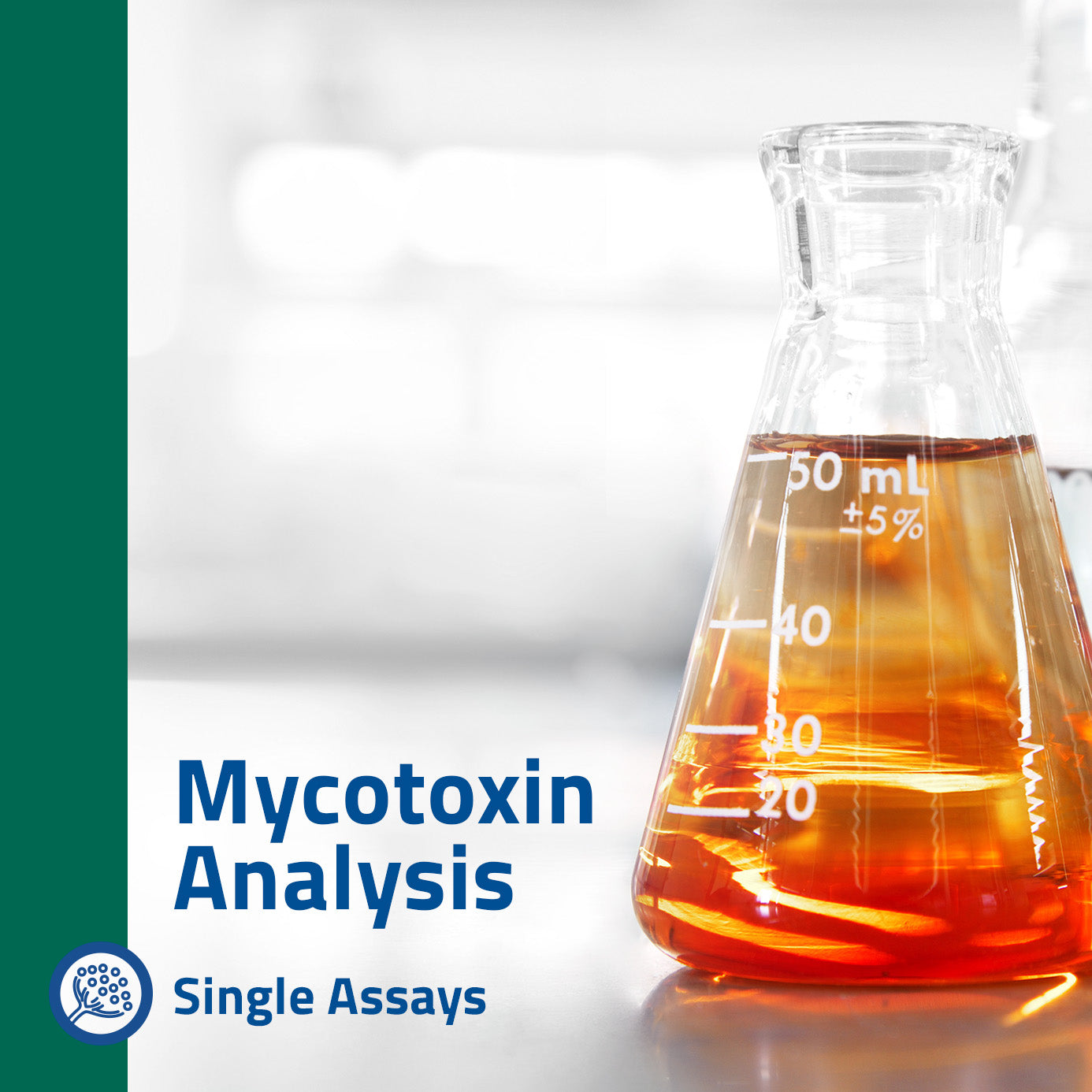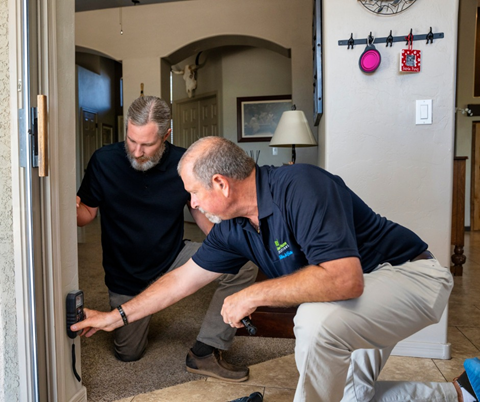Just How Mycotoxin Screening Assists Protect Against Contamination and Guard Food Materials

Mycotoxin screening is a crucial practice in the food sector, functioning as a frontline protection versus contamination by damaging toxic substances created by molds. With the application of advanced strategies like High-Performance Fluid Chromatography (HPLC) and Liquid Chromatography-Mass Spectrometry (LC-MS), food producers can precisely quantify and detect mycotoxin degrees in agricultural products. This positive technique not just makes sure compliance with rigid security policies yet likewise alleviates health threats to consumers. Normal screening strengthens brand online reputation and monetary health and wellness by decreasing contamination-related events. Just how precisely do these screening protocols integrate right into the wider food safety and security strategy?
Understanding Mycotoxins
Recognizing mycotoxins starts with identifying that they are toxic secondary metabolites produced by certain molds, which can infect farming items. These metabolites are not essential for the growth or reproduction of the fungi however can have serious ramifications for human and animal health and wellness. Mycotoxins are typically discovered in staple crops such as corn, wheat, barley, and nuts, where they can proliferate under certain conditions of wetness and temperature.
There are a number of kinds of mycotoxins, each produced by various fungal varieties. Aflatoxins, created by Aspergillus types, are amongst the most infamous, known for their cancer causing homes. One more significant team consists of ochratoxins, produced by Aspergillus and Penicillium species, which have nephrotoxic results. Fusarium varieties generate trichothecenes and fumonisins, both of which are connected with various acute and persistent health and wellness issues.

Threats of Mycotoxin Contamination
The threats of mycotoxin contamination are diverse, posturing substantial dangers to both food security and public health. Mycotoxins, toxic substances created by specific sorts of fungi, can contaminate a wide variety of agricultural items consisting of cereals, nuts, spices, dried out fruits, and coffee. Once these contaminants penetrate the food supply, they can cause significant health and wellness issues such as liver damages, kidney failure, and even cancer. At risk populaces, including children, the elderly, and immunocompromised individuals, are particularly in danger.
Economic effects are one more major issue. Contaminated plants can result in significant financial losses for farmers and food producers because of decreased returns and the need for expensive purification measures. In addition, international profession can be considerably prevented as countries enforce rigorous mycotoxin regulations to secure their populaces, leading to declined deliveries and stretched trade relations.
Environmental factors such as climate modification aggravate the danger of mycotoxin contamination. Variations in temperature and moisture can develop beneficial conditions for fungal development, increasing the likelihood of contamination events. Therefore, understanding and reducing these risks are critical for guaranteeing the safety and security and honesty of worldwide food products.
Approaches of Mycotoxin Checking
Accurately recognizing mycotoxin contamination in agricultural products is essential for safeguarding public wellness and keeping food security criteria. Numerous techniques are utilized to find and measure mycotoxins, each offering specific advantages and restrictions.
High-Performance Fluid Chromatography (HPLC) is an extensively used technique because of its high sensitivity and precision. It includes dividing mycotoxins from other compounds in a sample, allowing accurate quantification. Similarly, Fluid Chromatography-Mass Spectrometry (LC-MS) combines fluid chromatography with mass spectrometry to offer comprehensive molecular details, making it specifically beneficial for identifying multiple mycotoxins simultaneously - Mycotoxin testing Services.

Gas Chromatography-Mass Spectrometry (GC-MS) and Thin-Layer Chromatography (TENDER LOVING CARE) are additionally utilized, each with special applications. GC-MS is efficient for volatile mycotoxins, while TLC supplies a simpler, economical choice for preliminary screening.
Benefits of Routine Testing
Regular screening for mycotoxins in agricultural items supplies many benefits, significantly adding to public health and food safety and security. By recognizing contamination early, routine testing helps protect against the circulation of toxic foods, therefore minimizing the threat of mycotoxin-related ailments amongst consumers. This positive strategy not only safeguards human health but additionally boosts the general quality of food supplies.
Constant screening likewise sustains regulatory compliance. Various nations and areas have developed strict limits for mycotoxin degrees in food and feed. Adhering to these restrictions with regular screening makes sure that producers and distributors satisfy lawful requirements, therefore preventing fines and profession barriers. In addition, maintaining conformity fosters customer trust and brand name credibility, which are critical for market success.
Additionally, routine mycotoxin screening can bring about significant economic benefits. Early detection of contamination permits prompt treatment, reducing prospective losses from prevalent contamination. Implementing regular testing procedures can likewise decrease recall prices and related liabilities, which can be economically ravaging.
In addition, normal testing offers beneficial information that can educate far try this web-site better agricultural practices and storage conditions. By recognizing patterns of contamination, manufacturers can take on safety nets, thus contributing and decreasing future dangers to the sustainability of the food supply chain.
Carrying Out Checking Methods
Carrying out reliable mycotoxin screening procedures is essential for ensuring the safety and security and high quality of farming products. Each phase needs to be scrutinized to determine where mycotoxin contamination is most likely to happen.
Once crucial control factors are determined, picking proper testing techniques is important. Usual methods consist of enzyme-linked immunosorbent assay (ELISA), high-performance liquid chromatography (HPLC), and mass spectrometry (MS) Each approach has its staminas and weaknesses; hence, choosing the correct one relies on the particular mycotoxin being examined, the required level of sensitivity, and available sources.

Finally, incorporating the screening protocols right into a detailed food safety monitoring system is a good idea. This improves traceability and enables quick corrective activities when contamination is spotted, therefore securing the integrity of the food supply chain.
Verdict
Mycotoxin testing is crucial in stopping contamination and safeguarding food products by enabling very early detection of dangerous toxins created by mold and news mildews in agricultural items. Advanced methods such as HPLC and LC-MS make sure compliance with security laws and safeguard customers from health dangers. Normal testing boosts brand credibility, economic stability, and rely on food safety and security by minimizing contamination-related losses and preserving high criteria in food production. Carrying out strenuous testing procedures is thus vital for the sector's overall well-being.
Mycotoxin screening is an important technique in the food market, offering as a frontline defense against contamination by damaging toxic substances created by molds. An integrated approach involving farming techniques, storage space monitoring, and normal screening can minimize the threats linked with mycotoxin contamination, making certain food safety and security and public wellness.
The dangers of mycotoxin contamination are complex, presenting considerable dangers to both food security and public health.Regular screening for mycotoxins in farming products supplies many benefits, considerably contributing to public wellness and food security.Mycotoxin testing is important in protecting against contamination and guarding food materials by enabling very early detection of see here now hazardous toxic substances created by mold and mildews in farming products.